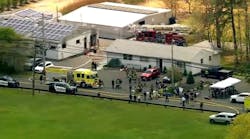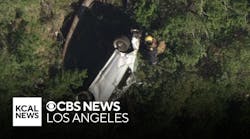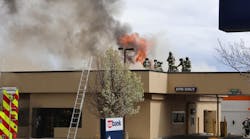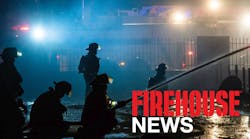SUBJECT: Pressurized Struts on Vehicles
TOPIC: Vehicle Fire Incidents with Pressurized Struts
OBJECTIVE: Review of generally accepted protocols for vehicle fire suppression and comparison of department's current vehicle fire protocols
TASK: Given a scenario of a burning vehicle, the fire suppression team leader will list and describe the department's current guidelines and tactics for fire attack and compare them to generally accepted vehicle fire tactics presented in this column.
McKinney, TX, firefighters responded to a van fire recently that renews the issue of pressurized struts on burning vehicles. This University of Extrication column will review this particular incident as well as look at generally accepted safe and efficient vehicle firefighting techniques used by fire departments across the country.
The McKinney incident found Engine 5(B) arriving at a fully involved Ford Aerostar minivan, burning in front of a house in a residential neighborhood. As the four-member team began their attack, a 1¾-inch handline was stretched by firefighters in full turnout gear with self-contained breathing apparatus (SCBA). Their off-angle approach allowed the nozzleman to sweep the undercarriage of the vehicle from a safe distance then move in to make a direct attack on the body of fire.
As the attack crew moved in, a pressurized gas strut for the minivan's liftgate on the passenger's side failed violently. Heat caused the strut to explode off its mounting bracket and rocket a distance of 88 feet directly rearward. The burning strut landed in the side yard of a neighbor's home, where it scorched the grass.
In this case, no firefighters were injured by the flying missile due to the fact that department protocols for vehicle fire attack were followed by the captain and crew. Beginning with initial apparatus approach, Engine 5 positioned at an off-angle from the front and rear of the burning van. Once on-scene, the attack team packed out fully; another department requirement. Fire attack was initiated with a hoseline of sufficient flow that knockdown can be assured. The off-angle attack position allowed the crew to sweep the undercarriage of the vehicle from a distance and then move in as the fire diminished. This author refers to this as "Getting the Upper Hand on the Lower Foot," meaning applying a cooling water spray to the lower 12 inches of a burning vehicle. This is where many components are that can explosively fail during a fire; fuel tank, bumper pistons, shocks, etc. Meanwhile, the McKinney driver/operator obtained a sustained source of water for the attack crew by connecting a five-inch supply line to a hydrant.
In this case, the firefighters did the right thing; actions that are generally accepted as the safest and most efficient techniques to follow at a vehicle fire incident. Fortunately, the exploding strut did what it was expected to do if it was to fail; it launched rearward in line with the vehicle. Experience has shown that components such as energy-absorbing bumper pistons, hood strut hinges, and liftgate struts that can go boom at a burning vehicle fire typically launch out the front or rear of the vehicle. The front and rear areas of a burning vehicle are the extreme danger zones for firefighters; our "Torpedo Alley." Do not approach a burning vehicle directly from the front or rear at any time during a fire attack.
TASK: Given a scenario of a burning vehicle, the fire suppression team leader will list and describe the department's current guidelines and tactics for fire attack and compare them to generally accepted vehicle fire tactics presented in this column.





